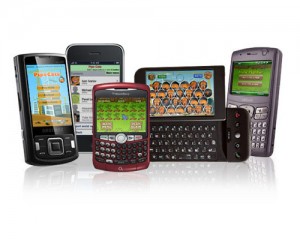Nearly 35 percent of smartphone owners will update their handsets this year, regardless of current device function.
In Australia, the Deloitte mobile customer survey has revealed that regardless of whether or not the current mobile technology is still fully functional, 35 percent of smartphone owners will be updating their handsets at some point this year.
Nearly half of all mobile phone owners will be holding onto their current devices instead of trading them in or selling.
That said, when it comes to the same mobile technology survey, it appears that many Australians are hanging onto their old devices when they’re not using them anymore. While 48 percent plan to keep their current smartphones and continue using them, this year, 27 percent will give them away to someone else who can use them. Another 15 percent will recycle their old devices and 8 percent will sell them. Two percent plan to replace their devices because they have gone missing.
With only 15 percent selling their devices after they don’t need them, Australians are skipping an opportunity to make money.
 When comparing this trend to the rest of the world, it is Singapore that is the region with the largest number of people who sell their old device models. Among them, 26 percent have done so. In second place is the United Kingdom, where 21 percent of device owners will be selling their gadgets when they replace them. Japan is not far behind, with 20 percent taking part in this online selling opportunity. In Germany, 16 percent will do so. Australia is ahead of only Canada, where only 13 percent of consumers will sell their used devices when they purchase new ones this year.
When comparing this trend to the rest of the world, it is Singapore that is the region with the largest number of people who sell their old device models. Among them, 26 percent have done so. In second place is the United Kingdom, where 21 percent of device owners will be selling their gadgets when they replace them. Japan is not far behind, with 20 percent taking part in this online selling opportunity. In Germany, 16 percent will do so. Australia is ahead of only Canada, where only 13 percent of consumers will sell their used devices when they purchase new ones this year.
According to Jeremy Drumm, the lead author of the Deloitte report, a surprisingly large number of Australians simply tuck their older smartphone models into a drawer when they replace them. The majority do so in order to make sure they have a replacement quickly available if anything should happen to their newer model.
That said, this means that the mobile technology isn’t benefiting a friend or family member and it is not being sold in order to make a bit of money and provide someone else with an affordable device. This trend suggests that there is a considerable amount of waste being generated by the current device replacement habits in the country.
Some people feel that older smartphones offer them everything they need and are holding off upgrades.
The mobile technology industry’s smartphone segment is watching its sales slowing and it has been trying very hard to help to make sure consumers burn through their present devices as fast as they can so they will replace them with something new.
However, there is a chunk of the consumer market that isn’t interested in all the latest bells and whistles.
Despite the fact that carrying older forms of mobile technology, such as smartphones that are older than a couple of years or so, there is a sizeable group of consumers who aren’t taken in by all the efforts the smartphone industry is making to try to push them to drop their old tech in favor of larger screens, touchscreens without physical keyboards, or even non-flip phone designs. There are many different reasons that people are choosing to hang on to their older devices instead of upgrading – even when their mobile providers try to woo them with great upgrade deals in order to stick around with them for another year or two.
Many people find that they reach the point that they know and love the mobile technology they have.
 These individuals find that their devices perform all the tasks they need to complete and it stops them from handing even more of their lives over to a device they must carry around all the time.
These individuals find that their devices perform all the tasks they need to complete and it stops them from handing even more of their lives over to a device they must carry around all the time.
The truth of the matter is that over 90 percent of smartphone owners change models within every span of two years. This, according to Ramon Llamas of IDC mobile phone trend tracking research firm. That said, there is a small but meaningful percentage of the population that is hanging onto their phones for three, four years or more.
While some people don’t want their devices to be as large as today’s typical offerings, others say that they aren’t actually all that impressed with the features currently being offered and they don’t see any reason to sign on to a new contract or hand over hundreds of dollars when their current mobile devices are still working.
Eventually, all mobile technology does need to be replaced in order to keep up with current standards, but it will be interesting to watch the replacement rates over years to come, and to see if people continue to want the latest or if they begin to hang on to what they already have as the novelty of novelty wears off.
 When comparing this trend to the rest of the world, it is Singapore that is the region with the largest number of people who sell their old device models. Among them, 26 percent have done so. In second place is the United Kingdom, where 21 percent of device owners will be selling their gadgets when they replace them. Japan is not far behind, with 20 percent taking part in this online selling opportunity. In Germany, 16 percent will do so. Australia is ahead of only Canada, where only 13 percent of consumers will sell their used devices when they purchase new ones this year.
When comparing this trend to the rest of the world, it is Singapore that is the region with the largest number of people who sell their old device models. Among them, 26 percent have done so. In second place is the United Kingdom, where 21 percent of device owners will be selling their gadgets when they replace them. Japan is not far behind, with 20 percent taking part in this online selling opportunity. In Germany, 16 percent will do so. Australia is ahead of only Canada, where only 13 percent of consumers will sell their used devices when they purchase new ones this year.
 These individuals find that their devices perform all the tasks they need to complete and it stops them from handing even more of their lives over to a device they must carry around all the time.
These individuals find that their devices perform all the tasks they need to complete and it stops them from handing even more of their lives over to a device they must carry around all the time.